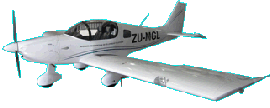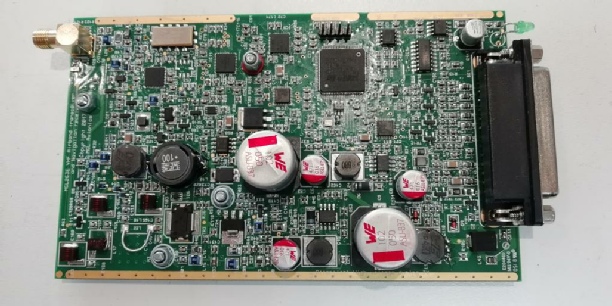The image above shows the single PCB design of the V16 transceiver. The receiver is based on an analog direct conversion receiver which converts the frequency to be received directly to base band in one step. There is no intermediate frequency. This avoids many of the drawbacks of a traditional airband radio (typically designed around a dual superhet principle) but also introduces many new and difficult challenges. These are overcome be means of significant digital processing of the received signals (around 20 million floating point math operations per second are needed to recover the audio with very good quality). Technically this receiver can be classed as a “near zero IF receiver”. Usage of a surface wave acoustic filter to allow only the VHF band to pass before any active components allows unmatched IP3 performance and resistance to interfering signals - this is also helped by the DCR receiver which naturally is very resistant to unwanted mixing effects causing spurious reception at unintended frequencies.
The transmitter is based largely around common technics but utilizes a RF output stage good for 35W of RF power so is here very overrated for good reliability. Modulation is done via a class-D source mode approach using digitized audio - this allows, within the allowable DO-186 limits, to shape the modulation in such a way that peak power needs during transmit are mitigated to levels quite comparable to an unmodulated carrier without affecting voice clarity. It also allows very tight modulation control so to use the available carrier power to maximum effect and range regardless of the actual voice audio level.
A built in VSWR meter based on two directional couplers is an unusual addition to a airband transceiver but this is based on many years of customer support with the older V6 and V10 transceivers. In most cases problems are caused by bad antenna match or other antenna issues. The only device that really helps to show the issue is the VSWR meter which shows power going to the antenna and the power coming back (the reflected power that causes trouble).
Audio is processed completely in the digital domain using 24bit sigma-delta converters. This results in excellent audio quality.
Making all of this possible is a newly released high performance Cortex M7 ARM microcontroller from ST Microsystems that includes a very fast math unit able to process 64 bit floating point numerics a vital requirement needed to achieve the needed mathematical accuracy.
The all important time base is based on a temperature controlled, calibrated crystal oscillator with accuracies better than 1.0 ppm (typically 0.1ppm and 0.2ppm at temperature extremes).
A fully integrated PLL is used to create the actual LO frequencies for the receiver and transmitter. Running at some 5Ghz the PLL provides excellent phase noise performance and is insensitive to interference.
For third party use, the above PCB can be used outside the supplied housing without invalidating DO-186 and FCC limits provided the PCB is packaged into an enclosure that itself does not contain possible strong interference sources.
The available ICD provides protocol information to fully utilize all aspects of the V16 using either RS232 or CAN bus control(or both). This makes the V16 a very suitable choice as onboard VHF airband transceiver for UAVs and special projects.






